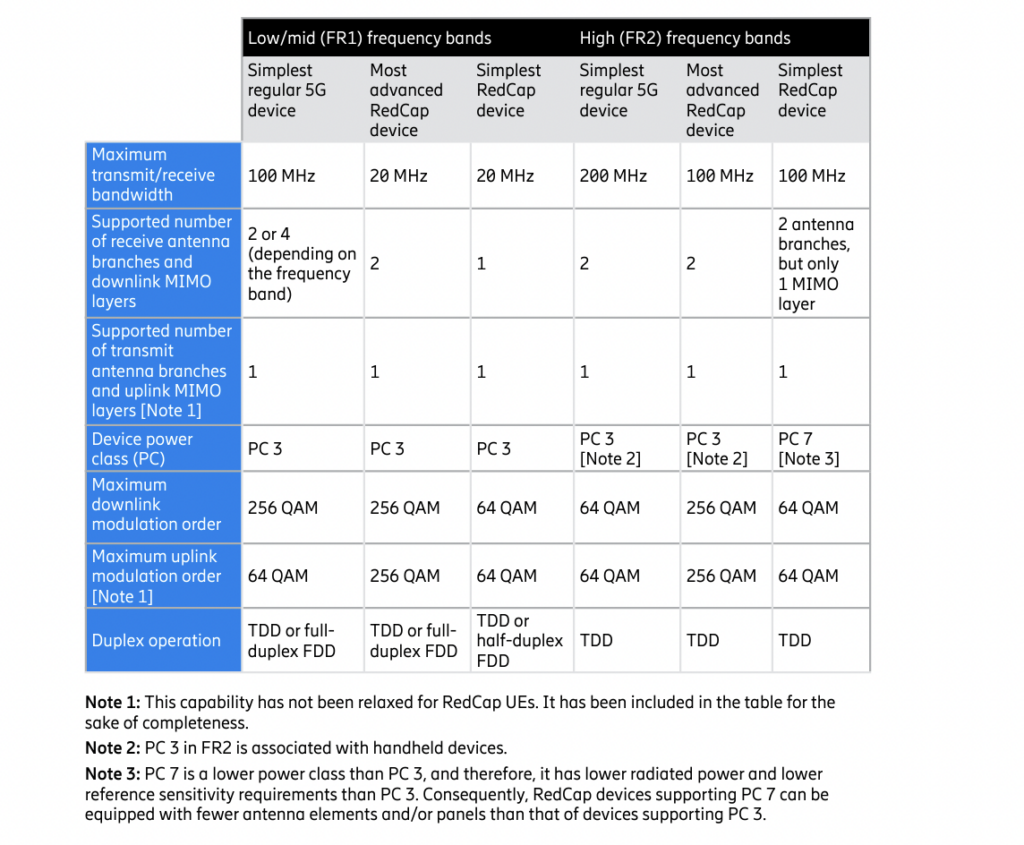RedCap is being prepped for real-world deployments. What performance can it achieve?
Development and testing of 5G New Radio Reduced Capability (RedCap) is picking up steam, with recent announcements from Qualcomm as well as a slew of testing announcements in the past few months from major carriers around the world.
RedCap is a 5G Standalone technology, bringing IoT and lower-performance devices into the 5G SA world. But lower performance doesn’t mean “low” performance as it has been understood in the NB-IoT, LPWA world. RedCap’s speeds, latency and spectrum use are largely on-par with advanced LTE capabilities. Indeed, it is seen as the 5G heir to LTE Cat-4 in terms of:
-Speeds of tens to hundreds of Mbps. This maps very neatly to LTE Cat-4, in which data rates range up to 50 Mbps in uplink and up to 150 Mbps in the downlink.
-Simpler antenna design, with support for one transmit antenna and one or two receive antennas.
-Compact design with improved battery life, compared to other fully-equipped 5G NR options.
-Spectrum support in low-mid (Frequency Range 1) using a 20-megahertz channel and high (Frequency Range 2) bands, using 100 megahertz of spectrum. The initial RedCap chips and devices are expected to focus on FR1.
Ericsson, which is expected to commercially launch its RedCap software this month, summarizes the features of RedCap in the following chart.

So how does this map to expectations of real-world performance? While the theoretical peak of RedCap in the downlink has been expected to be right around 150 Mbps, there are indications that RedCap chipsets are being refined to improve, rather than reduce, upon actual performance as the technology gets closer to launch. Consider, for example, module maker Fibocom’s specification sheets for its RedCap offerings announced over the course of this year. When Fibocom announced its first RedCap FG 132-NA module in May, it laid out the speed specs as up to 220 Mbps in the downlink and up to 100 Mbps in the uplink. By the time the company announced a second module, the FG131, the advertised speeds crept even a bit higher, with Fibocom saying that both RedCap modules could support speeds up up to 226 Mbps in the downlink and up to 120 Mbps in the uplink in 5G SA networks.
Similarly, RedCap testing by Huawei a year ago, in November 2022, achieved rates of 142 Mbps in the downlink and 35 Mbps in the uplink in mid-band TDD spectrum. Comparatively, testing by Ericsson in partnership with MediaTek conducted in the fall of this year yielded an FDD data call with throughput of 220 Mbps in the downlink and 74 Mbps in the uplink. In TDD spectrum, Ericsson and MediaTek recorded downlink speeds of 153 Mbps and uplink speeds of 13.5 Mbps.
Looking for more insights on 5G RedCap as a technology, potential use cases and its strategic role in the 5G ecosystem? Check out the editorial webinar available on-demand, featuring Counterpoint Research, Fibocom and Viavi Solutions—and keep an eye out for our upcoming special report!

